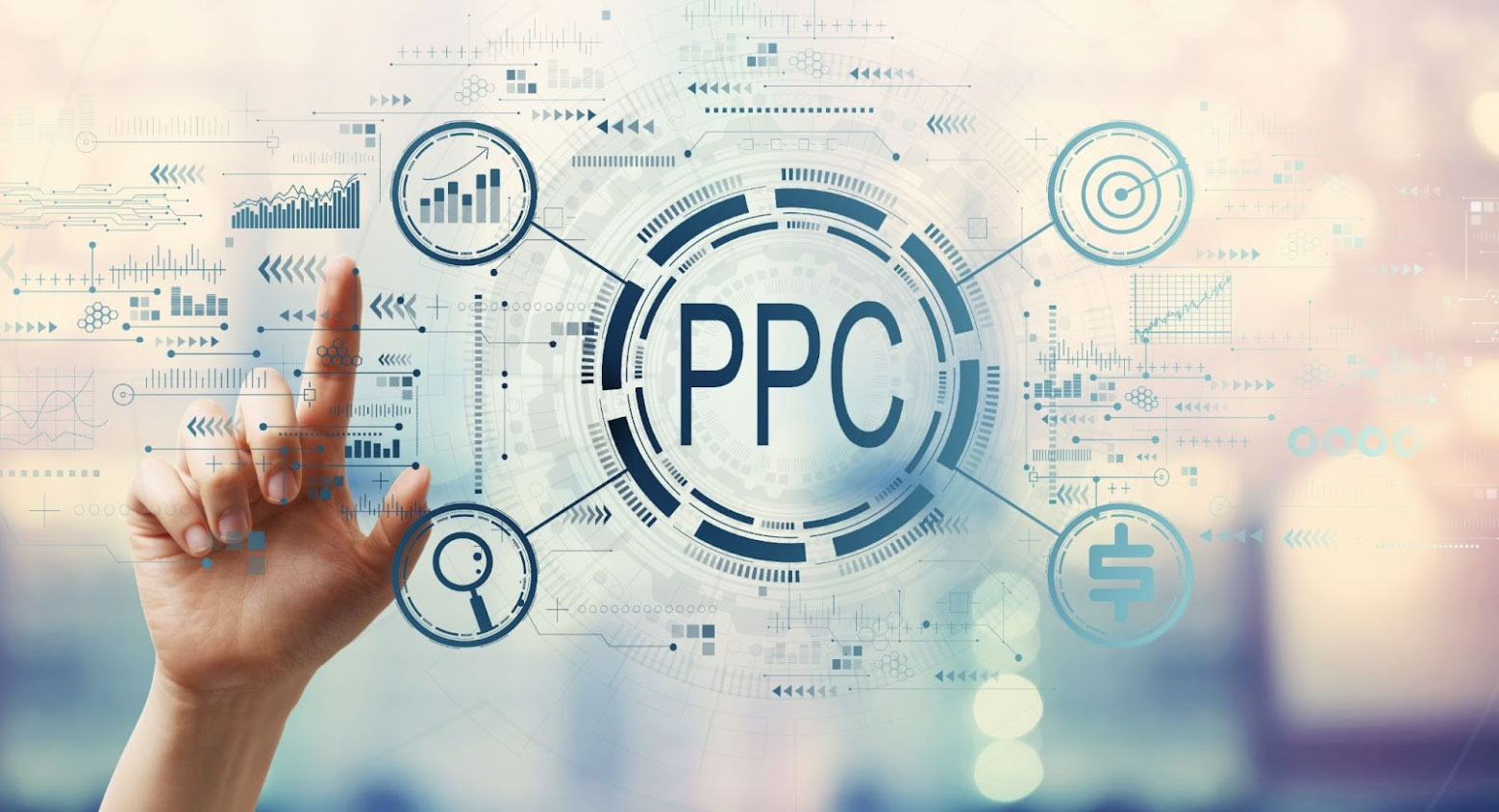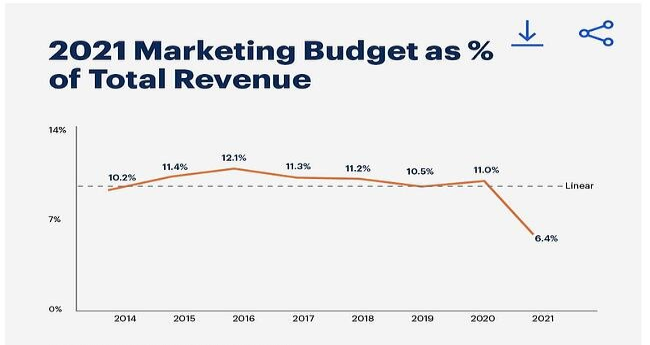Creating An Effective PPC Marketing Campaign That Works
-

Aaron Gray
- Blogs
-
 October 18 , 2022
October 18 , 2022 -
 13 min read
13 min read
The energetic landscape of marketing is perpetually evolving, compelling businesses to embrace novel trends, methodologies, and technologies, transitioning from conventional marketing to contemporary digital marketing strategies. These strategies, including search engine marketing (SEM), social media marketing, and pay-per-click (PPC), serve as a potent, efficient arsenal for stimulating sales, reaching broader audiences, and creating more leads compared to traditional approaches. To navigate these waters effectively, consider partnering with a proficient Google Ads Agency in Melbourne.
What is A PPC Marketing Campaign?

Pay-per-click (PPC) is an online marketing strategy where advertisers pay a fee whenever someone clicks on their ad and lands on their site. When you use this strategy, your ads appear at the top of search results whenever someone conducts a similar search, or they appear as banners within publishers’ site. While some people confuse PPC with search engine marketing (SEM), they differ because PPC is a paid advertisement. Meanwhile, SEM covers various strategies, including search engine optimization (SEO) and PPC.
For businesses, the fee you pay for every click is known as cost-per-click (CPC). Research shows that the average CPC was USD$0.62 in the first half of 2022, which is budget-friendly and cost-effective. It also increases your investment return and gives you access to marketing data that helps you compete in the market.
If you’re looking to develop a PPC marketing campaign or you’re looking for an upgrade, here’s a guide on creating an effective PPC marketing campaign:
1. Define Your Objectives
It’d be best to define first what you want to achieve with your PPC campaign. It’s the most critical part of developing an effective marketing strategy. You could use many PPC targeting choices within and beyond AdWords, and outlining your goals helps you choose the best ad type and platform for your business.
The most common reasons for creating a PPC campaign are to:
- Create brand awareness
- Increase traffic to your website
- Generate quality leads
- Increase revenue
The platform you choose will depend on your goals. For instance, if your goal is generating leads, you may want to consider lead-capture ads from Facebook.
However, don’t let your objectives limit you to one platform or ad type; instead, use various ad types and marketing platforms for a more sophisticated PPC strategy.
2. Know Your Campaign’s Target Audience

To implement a successful marketing campaign, you must know your target audience. If you’ve been in business for an extended period, more or less, you already know who to target, and it could be a particular business sector or consumer market.
If not, conducting an audience analysis before you launch your marketing campaign is essential. Such analysis includes:
- Demographic analysis: This involves collecting your audiences’ demographic information, like age, gender, race, marital status, socioeconomic status, and ethnicity.
- Situational analysis: This involves understanding your audience’s interest level, size, and purchasing occasions.
- Behavioral audience analysis: This includes researching how customers act online and offline, their research and purchasing patterns, and website visits.
- Psychographic analysis: This analysis is done to understand consumer interests, attitudes, and lifestyle choices.
Let’s show an example of a target audience break down for a possible clothing store:
| Age | Sex | Marital Status | Income | Spending Habits | Behaviour | Attitude |
| 35 | Male | Single | 80,000 | Loves to splurge on branded items | Goes to clothes stores every weekend to buy the latest trends | Confident, outgoing, wants to look good all the time. |
Once you’ve defined your audience, you can now target them with your PPC ads. The best target strategy to use is based on your audience’s intent. This means every detail you include must be relevant to what your audience is searching for.
3. Set A Budget
You must set your PPC campaign budget to avoid runaway costs and to increase your return on investment. Be realistic when setting your budget because it’ll play a vital role in how your campaign turns out. Outline your daily, total, and budget per click to be on the right track.
Businesses spend about 7% and 10% of their total income on marketing their products but the budget reduced to 6.4% in 2021:

However, you shouldn’t spend the same amount simply because other businesses are doing it. Instead, consider calculating customer lifetime value (CLV) to know your customer’s worth. This will help you know the amount you may use to acquire at least one customer and develop a reasonable budget. You may even consider the 70-20-10 rule of thumb where you:
- Direct 70% of your budget toward the part of your campaign you’re convinced will work
- Use 20% on new ideas meant to improve your business
- Allocate 10% toward experimental and risky PPC campaign ideas
In addition, there are four models you could use to set your PPC models. They include:
- Goal-based budgeting: This approach involves budgeting your PPC campaigns depending on your goals and planned market efforts.
- Zero-based budgeting: It involves resetting your PPC budget to zero and rebuilding it from scratch.
- Prior-year-based budgeting: This involves setting your PPC budget depending on the total sales of the previous few years.
- Industry-standard budgeting: You set your budget based on benchmarks and competition standards.
As you can see from above these are great models to use depending on your business’s marketing budget and needs.
4. Align Your PPC Ads With Your Landing Page

Create landing pages that are unique, optimized, and display the same information in your ad to capitalize on your PPC campaign. It’s also critical to ensure your PPC ads don’t lead to your home page and instead display or showcase the products you’re offering.
Good landing pages are essential for your website and may add to your PPC conversion rate, which is estimated to be 3.75% on average for every search. However, the conversion rates vary from industry to industry as shown below:
PPC Conversion by Industry
| Industry | Average Click Through Rate (CTR) (Search) | Average CTR (Design) |
| Dating Personals | 6.05% | .72% |
| Advocacy | 4.41% | .59% |
| Auto | 4.00% | .60% |
| Education | 3.78% | .53% |
| Real Estate | 3.71% | 1.08% |
| Health Medical | 3.27% | .59% |
| Hospitality Travel | 3.27% | .47% |
| Legal | 2.93% | .59% |
| Finance Insurance | 2.91% | .52% |
| E-commerce | 2.69% | .51% |
| Industrial Services | 2.61% | .50% |
| Home Goods | 2.44% | .49% |
| Employment Services | 2.42% | .59% |
| Customer Services | 2.41% | .51% |
| B2B | 2.41% | .46% |
| Technology | 2.09% | .39% |
Source: Similar Web
5. Create Your Ad and Select Your PPC Ad Network
Now that you’ve defined your PPC goals and target audience, and have an operating budget and effective landing pages, it’s time to take the next big step: creating killer ads. When creating these ads, consider using PPC tools such as Google AdWords, ClickSWEEPER, and Microsoft adCenter.
The network or platform you use for your ads will depend on your target audience and the specific goals of your campaign. A good example is using Instagram and TikTok ads to target a younger audience and Facebook ads to target an older audience.
Consider starting with Google ads if you’ve never run a PPC ad before. It has more traffic, as it appears on all platforms owned by Google, and will help establish your business. It’s also easy to create an account with Google, set your budget, and try different ad formats. The brighter side of using Google ads is that you can use its analytics to see how you’re performing and exit whenever you wish, as there’s no contract to tie you down.
6. Choose Your Bidding Strategy

Another crucial step when developing an effective PPC campaign is selecting your bidding strategy. PPC bids are offered in a pay-per-click auction to help your ads stand a chance of appearing on top of other ads. A good bidding strategy will be the cornerstone that holds your PPC campaign.
If you already have a bidding strategy, you’ll have to adjust it accordingly to suit your targeting methods, keywords, and campaign ideas. Luckily, there are different types of bidding strategies you could use for your campaigns. They include:
- Target impression share: It’s an automated PPC bidding strategy based on your target values. It gives you room to specify your impression share’s target figure and select the point at which your ads pop up for the impressions. It also allows your ad to appear on the absolute top, the top, or just about anywhere on search results. You should, therefore, be careful when selecting the reappearance and position of where your ad appears.
- Target cost-per-action (CPA): It’s one of the most used strategies worldwide. According to Statista, the U.S technology CPA AdWords display on Google Network was about USD$103.6 on average. See the CPA AdWords displays in different domains in the table below:
| Industry | Search | Google Display Network (GDN) |
| Dating Personals | USD$76.76 | USD$60.23 |
| Advocacy | USD$96.55 | USD$70.69 |
| Auto | USD$33.52 | USD$23.68 |
| Education | USD$72.7 | USD$143.36 |
| Real Estate | USD$116.61 | USD$74.79 |
| Health Medical | USD$78.09 | USD$72.58 |
| Hospitality Travel | USD$44.73 | USD$99.13 |
| Legal | USD$86.02 | USD$39.52 |
| Finance Insurance | USD$81.93 | USD$56.76 |
| E-commerce | USD$45.27 | USD$65.8 |
| Industrial Services | USD$79.28 | USD$51.58 |
| Home Goods | USD$87.13 | USD$116.17 |
| Employment Services | USD$48.04 | USD$59.47 |
| Customer Services | USD$90.7 | USD$60.48 |
| B2B | USD$116.13 | USD$130.36 |
| Technology | USD$133.52 | USD$103.6 |
Source: Statista
In this, you input your target cost per acquisition using Google suggestions or your business data. However, if you’re on a budget, targeting CPA may not be your best bidding strategy because the algorithm will fail to account for the bids.
- Target return on ad spend (ROAS): It’s the total conversion revenue you want to get from the capital invested in ads. Target ROAS will also not be as effective when operating under a budget. Remember, your set target ROAS will significantly influence your conversion rate, so be careful about your chosen targets.
- Maximize conversions: If your website is performing well and you still think it has the potential to grow and pull more conversions, then maximizing conversions is your strategy. You should be ready to invest heavily in it for it to work.
- Maximize conversion value: It attempts to trigger the most conversion rate you could get from a given ad. It bids higher for auctions that’ll result in more conversions than that with a lower conversion.
- Maximize clicks: Use this strategy when you aim to maximize clicks. Google adjusts your campaign for maximum clicks automatically when you use this strategy.
However, you may have the best bidding strategy and still not have an effective PPC. To ensure your strategies are functional, you should consider:
- Setting realistic targets
- Analyzing your strategies from time to time
- Finding out and understanding how bidding adjustments work
- Not adjusting your bids too frequently
- Setting maximum and minimum CPCs
- Collecting enough data before using any bidding strategy
These are just some things you can try.
7. Select Your Keywords Wisely
Selecting the right keyword is another crucial step when implementing a PPC strategy. Some ads are likely to attract readers’ attention more than others, while others may retain them on your site for extended periods. Hence, you must identify such keywords and maximize their use to draw more traffic to your site. For instance, research was conducted on what topics Google users are most interested in regarding dietary supplements. The results are summarized below, with the figures expressed as ratios with the value for “lutein.” Thus, the most potential keyword for a dietary supplements campaign is protein, followed by minerals, vitamins, etc.
| Topic | Relative search volume ratio |
| Protein | 9.64 |
| Mineral | 5.24 |
| Vitamin | 3.47 |
| Fiber | 3.01 |
| Chemical | 1.76 |
| Bacterial | 1.34 |
| Fatty acid | 1.13 |
| Botanical | 0.97 |
| Amino acid | 0.86 |
| Enzymes | 0.48 |
Source: NCBI
Consider these three essential steps when selecting keywords to use in your campaigns:
- Create a seed list: Words based on the information you collected on your audience, competitors, and previous campaigns.
- Refine your list: Check for misplaced keywords and get rid of them. Using the wrong keywords will cost you a lot of money.
- Consider using research tools: These tools will help you eliminate irrelevant words and expand your keyword list. Some may even help you understand your competition.
More than 50% of marketers claim that they measure the performance of their SEO strategies through organic traffic and keyword rankings. Therefore, a great keyword should contain phrases relating to your business and must also consider your goals and target audience.
Here are the main categories for effective keywords:
- Product-specific keywords: These are keywords that relate to what you’re selling or offering. Here, you don’t use broad keywords; instead, you’re more specific about your products and services.
- Audience-based keywords: These are broad keywords you use when your main goal is to create brand awareness. It’s effective for new businesses or when you want to introduce a new product line into the market. However, it’d help if you kept a close watch on them to ensure they don’t sabotage your PPC campaign.
- Competitor keywords: These are keywords your competitors use to generate more traffic and improve their rankings. These keywords can make your ads visible on the same search pages as your competition.
- Alternate keywords: You only use alternate keywords when consumers are leaning towards a similar product.
- Branded keywords: These keywords include the name of your brand to prevent competitors’ PPC ads from redirecting your audience to their websites.
The keywords you use are powerful to your campaign so take it slow to define the best options for your business need.
8. Optimize and Analyze Your PPC Marketing Strategy

PPC campaign strategies use various metrics, and you must familiarize yourself with them to gauge the effectiveness of your Adwords advertising activities. The most common ones are:
- Return on ad spend (ROAS): This is the profit you get from your ads. It’s the ratio of PPC ad expenditure and sales generated from the same. It evaluates whether or not your ads contribute to your financial goals.
- Click-through rate (CTR): This is the ratio between the number of people who click through your ad and total impressions and how often your ad is seen by consumers online. This metric helps in determining the relevance of your content.
- Cost per acquisition (CPA): This is the total cost you spend to acquire a sale. High costs may result from inefficient audience targeting, keywords, or poor product fit. It shows the competitiveness of your keyword.
- Cost per click (CPC): The amount you bid for your ad to show on search engines. The average CPC is about USD$1.86 for Facebook Ads and USD$2 for Google Ads. The costs vary depending on your advertising networks and can lie between USD$1 and USD$30 per click.
- Conversion rates (CR): Measure how your ads generate leads depending on your goals and targets.
- Quality score: It shows your AdWords scores and productivity of various factors such as landing pages, CTR, and ad relevance.
These metrics will help you know whether or not your PPC campaign is working. You’ll also get insights on the keywords, bidding and audience strategies to maintain and which ones to replace.
Conclusion
PPC is among the most rewarding internet marketing strategies today. It’s cost-effective, reaches a greater audience, and promotes brand awareness. However, your PPC campaign has to be well-planned and budgeted for it to be successful. To help you create an effective PPC campaign, considering the guidelines above can be a good start.
Subscribe to Our Blog
Stay up to date with the latest marketing, sales, service tips and news.
Sign Up
"*" indicates required fields


